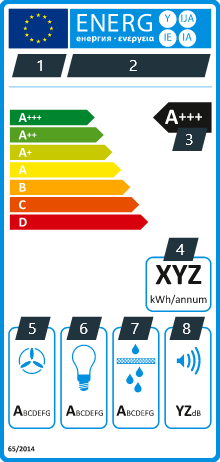Energy
For each products you can view and download the energy label (version Europe and Turkey) and detailed information (product fiche) of each product.
Download your Energy LabelBy clicking you will be redirected to a section where: to view and download the energy label (version Europe and Turkey) and detailed information (product fiche) of each product Silfim enter the ID code of the model in the search field: to view and download the energy label (version Europe and Turkey) and detailed information (product fiche) of each product Silfim personalized entered credentials in the restricted area and then enter the ID code of the model in the search field.
Technological development in the field of domestic cooking equipment has been rapid in recent year and has shown that there are many large margins to improve performance and reduce the global consumption of electricity. Based on this assumption, the legislature, the Delegated Regulation (EU) No. 65/2014, has integrated the Directive 2010/30/EU of the European Parliament and of the Council on energy labeling of hoods used for domestic use in the kitchen. To this end it has been devised an energy label for kitchen hoods, in order to ensure that labels provide the performance data, which are an incentive for producers in the increasingly improve performance, reduce fuel consumption and give the consumer a tool to assess the differences and identify the best performing models. In any case the energy label must be provided by the manufacturer and showed on the product or next to it by the dealer, so that it is clearly referred to the product.
For domestic range hoods placed on the market from 1 january 2015, the energy label shall provide an energy efficiency classes from A to G. For domestic range hoods placed on the market from 1 january 2016, the energy label shall provide an energy efficiency classes from A+ to F. For domestic range hoods placed on the market from 1 january 2018, the energy label shall provide an energy efficiency classes from A++ to E. For domestic range hoods placed on the market from 1 january 2020, the energy label shall provide an energy efficiency classes from A+++ to D.
Turkey that is not a EU member, but only candidate, has customized the energy label; for each products you can view and download this version.
In each sheet of our hoods you find the item ENERGY CLASS indicating the class of the product.
The image shows how to read the energy label.

